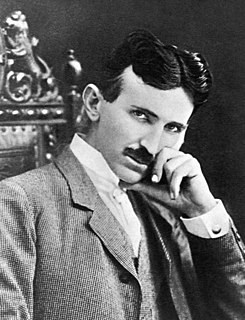
Nikola Tesla was a Serbian-American inventor, electrical engineer, mechanical engineer, and futurist best known for his contributions to the design of the modern alternating current (AC) electricity supply system.

Wardenclyffe Tower (1901–1917), also known as the Tesla Tower, was an early experimental wireless transmission station designed and built by Nikola Tesla on Long Island in 1901–1902, located in the village of Shoreham, New York. Tesla intended to transmit messages, telephony and even facsimile images across the Atlantic to England and to ships at sea based on his theories of using the Earth to conduct the signals. His decision to scale up the facility and add his ideas of wireless power transmission to better compete with Guglielmo Marconi's radio based telegraph system was met with refusal to fund the changes by the project's primary backer, financier J. P. Morgan. Additional investment could not be found, and the project was abandoned in 1906, never to become operational.

My Inventions: The Autobiography of Nikola Tesla is a book compiled and edited by Ben Johnston detailing the work of Nikola Tesla. The content was largely drawn from a series of articles that Nikola Tesla had written for Electrical Experimenter magazine in 1919, when he was 63 years old. Tesla's personal account is divided into six chapters covering different periods of his life: My Early Life, My First Efforts At Invention, My Later Endeavors, The Discovery of the Rotating Magnetic Field, The Discovery of the Tesla Coil and Transformer, The Magnifying Transmitter, and The Art of Telautomatics.

The Tesla Experimental Station was a laboratory in Colorado Springs, Colorado, USA built in 1899 by inventor Nikola Tesla and for his study of the use of high-voltage, high-frequency electricity in wireless power transmission. Tesla used it for only one year, until 1900, and it was torn down in 1904 to pay his outstanding debts.
Tesla Electric Light and Manufacturing Company was an electric lighting company in Rahway, New Jersey that operated from December 1884 through 1886.

Thomas Commerford Martin was an American electrical engineer and editor.
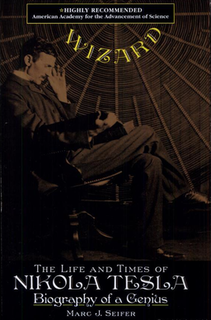
The book Wizard, the Life and Times of Nikola Tesla is a biography of Nikola Tesla by Marc J. Seifer published in 1996.

Tesla: Man Out of Time (ISBN 0139068597) is a 1981 biography of Nikola Tesla by Margaret Cheney. The book describes the life of Nikola Tesla (1856–1943), the Serbian-American inventor. Margaret Cheney's narrative details Tesla's childhood during the 1850s and 1860s in the then Austro-Hungarian Empire, his 1884 arrival in New York, becoming an American citizen in 1891, his inventions and contributions to engineering, up to his death New York at age 86 during the middle of World War II in 1943. The book is focused largely on Tesla's personality and not his inventions.
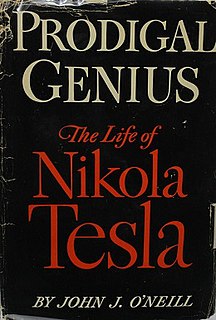
Prodigal Genius: The Life of Nikola Tesla (ISBN 0914732331) is a 1944 book by John Joseph O'Neill detailing the life of Nikola Tesla.
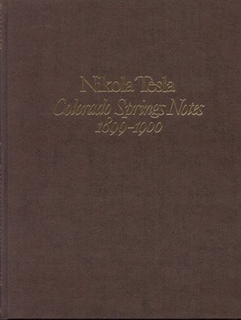
Colorado Springs Notes, 1899–1900 (ISBN 8617073527) is a book compiled and edited by Aleksandar Marinčić and Vojin Popović detailing the work of Nikola Tesla at his experimental station in Colorado Springs at the turn of the 20th century.

Tesla's electro-mechanical oscillator is a steam-powered electric generator patented by Nikola Tesla in 1893. Later in life Tesla claimed one version of the oscillator caused an earthquake in New York City in 1898, gaining it the popular culture title "Tesla's earthquake machine".
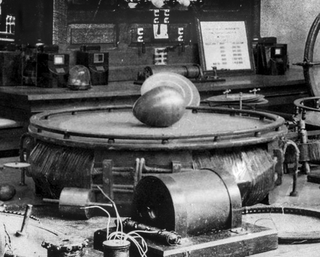
Tesla's Egg of Columbus was a device exhibited in the Westinghouse Electric display at the 1893 Chicago World's Columbian Exposition to explain the rotating magnetic field that drove the new alternating current induction motors designed by inventor Nikola Tesla by using that magnetic field to spin a copper egg on end.
Teleforce is a proposed defensive weapon by Nikola Tesla that accelerated pellets or slugs of material to a high velocity inside a vacuum chamber via electrostatic repulsion and then fired them out of aimed nozzles at intended targets. Tesla claimed to have conceived of it after studying the Van de Graaff generator. Tesla described the weapon as being able to be used against ground-based infantry or for anti-aircraft purposes.
Leland I. Anderson is a technical writer and electrical engineer who lives in Denver, Colorado. His long-time interest in Nikola Tesla took root in the early 1950s, and his activities since then have resulted in his recognition as one of the world's foremost Tesla historians. He founded the Tesla Society and edited the Tesla Society Newsletter Tesliana for many years, beginning in the 1950s.

Marc Jeffrey Seifer is an American author who has published books on handwriting analysis (Graphology), human consciousness and the mind, biographies of the inventor Nikola Tesla, and several works of fiction. His book Wizard: The Life & Times of Nikola Tesla: Biography of a Genius has been called "Serious scholarship" by Scientific American, "Revelatory" by Publishers Weekly and is "Highly Recommended" by the American Association for the Advancement of Science.

The World Wireless System was a turn of the 20th century proposed telecommunications and electrical power delivery system designed by inventor Nikola Tesla based on his theories of using Earth and its atmosphere as electrical conductors. He claimed this system would allow for "the transmission of electric energy without wires" on a global scale as well as point-to-point wireless telecommunications and broadcasting. He made public statements citing two related methods to accomplish this from the mid-1890s on. By the end of 1900 he had convinced banker J. P. Morgan to finance construction of a wireless station based on his ideas intended to transmit messages across the Atlantic to England and to ships at sea. His decision to change the design to include wireless power transmission to better compete with Guglielmo Marconi's new radio based telegraph system was met with Morgan's refusal to fund the changes. The project was abandoned in 1906, never to become operational.

Martin Sekulić (1833–1905) was a mathematics and physics teacher from Karlovac, one of the few high-school professors who were members of the Croatian community of physicists at the time.

Nikola Tesla patented the Tesla coil circuit on April 25, 1891. and first publicly demonstrated it May 20, 1891 in his lecture "Experiments with Alternate Currents of Very High Frequency and Their Application to Methods of Artificial Illumination" before the American Institute of Electrical Engineers at Columbia College, New York. Although Tesla patented many similar circuits during this period, this was the first that contained all the elements of the Tesla coil: high voltage primary transformer, capacitor, spark gap, and air core "oscillation transformer".















